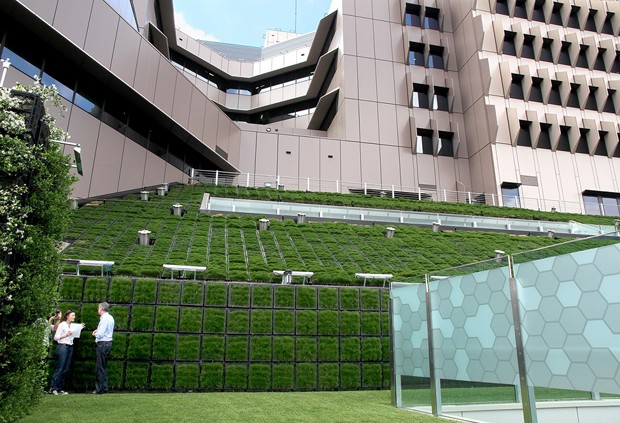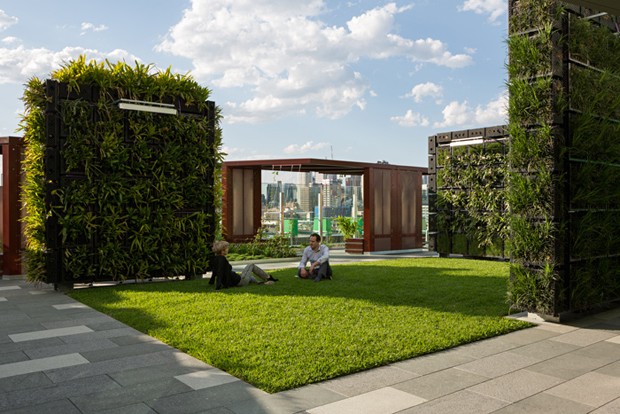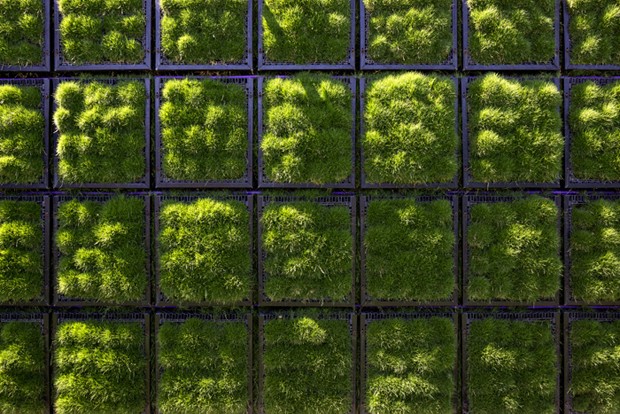Katharina Nieberler Walker, associate at Conrad Gargett, was the lead landscape architect for the newly opened Lady Cilento Children's Hospital in Brisbane.
Nieberler Walker will speak on ‘Healing Gardens’ at the Green Cities Conference in Melbourne.
Architecture & Design spoke to her about the Lady Cilento Children's Hospital project, the impact on landscape architecture on the healing process and why green infrastructure needs to be as important as engineering infrastructure.
You were lead landscape architect on the Lady Cilento Children's Hospital project in Brisbane (pictured). What were some of the challenges of the project?
Where to begin? Two challenges spring to mind. Firstly, how do you stay true to the vision for the entirety of the project? Secondly, how do you maintain the scope of the landscape design throughout the many value management sessions and constant pressure to reduce spending, in particular during the documentation and tender period? Over seven years we worked hard to make the right decisions and pick the important issues worth fighting for. It is easy for the vision to die the death of a thousand small cuts.

At the Lady Cilento Children’s Hospital, architecture and landscape integrate seamlessly. This seamless integration proved to be the best defence against scope and budget cuts. For example, the green sloping roof was under serious threat of budget cuts as late as during the construction phase. However, the integrated building design was too hard to undo, therefore proved not to be an option for cost cutting.
There were many technical challenges too – how do you make an epiphyte column work or how do you successfully install 30 year-old fig trees on the community plaza for instant shade?

The external environment of a place can have a significant impact on people. What healing impact do you think landscapes can have for people recovering from illness?
Contemporary research suggests that access to nature can manipulate our frame of mind and in turn can affect our physiological health. Studies have shown that exposure to nature can improve our physiological health by lowering blood pressure and reducing the release of stress hormones. This can have a positive effect on the patient recovery.
Roger Ulrich, a leading researcher in healing gardens, credits healing gardens with four functions: the function of movement (exercise and rehabilitation), the function of control (temporary escape and access to privacy), the function of social support (amongst patients, visitors and staff) and the function of natural distraction (plant, flowers, nature sounds and wildlife).
Clare Cooper Marcus from the University of California also claims that access to gardens and nature can enhance people’s ability to deal with stress and therefore potentially improve health outcomes. She claims that natural elements are critical because they represent a complete contrast to the experience of being inside a hospital.

Photography by Christopher Frederick Jones, Christopher Hall Jordan and Lend Lease
How much of a different approach do you need to take with health projects compared to other projects?
The approach should not be any different because the power of nature and the benefit of contextual design apply equally to all human environments. Edward Wilson’s ‘Biophilia’ theory, which literally means the ‘love of living things’, argues the ‘innate emotional affliction of human beings to other living organisms’. He states that our relationship with nature is a fundamental component of building and sustaining good health. His evolutionary theory explains why we care about animals and keep plants in and around our home.
We believe that this is a compelling reason to make green infrastructure as important as engineering infrastructure in the design of our cities.
What landscape has had a significant influence on you and why?
The splendour and serenity of natural landscapes in Australia have had a significant influence on my work. This includes experiencing the wild rivers, old growth forests and temperate rainforests in Tasmania, the subtropical and tropical splendour of Australia’s east coast and the vastness of the centre. Who could not be affected by Australia’s great landscapes?
If you weren't a landscape architect, what would you like to be doing and why?
I can’t imagine not being a landscape architect. What better profession is there? As a landscape architect I have the opportunity and knowledge to shape a better environment for people by adapting natural systems for the urban environment.

